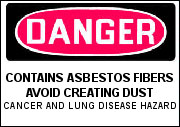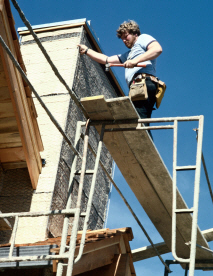|
What you need to know about asbestos Renovations or demolitions of materials containing asbestos can release the fibers into the air. Therefore, the National Emissions Standards for Hazardous Air Pollutants (NESHAP) requires the owner of any property containing asbestos building materials to get an asbestos inspection prior to any demolitions or renovations of that property. Asbestos Siding
Asbestos shingle siding, commonly installed in the 1940's and early 1950's, consists of a material known as "Transite". Transite siding is composed of asbestos fibers embedded in a cement medium which prevents the release of fibers into the air where they might be inhaled.
Unless the material is ground into dust by application of power tools or other destructive processes, Transite is not regarded as a significant health hazard. If you should decide to alter the exterior of the building, removal, handling and disposal of asbestos-containing material may need to be assigned to a specially licensed professional, and such services can be quite expensive. Requirements for removal, handling and disposal typically vary by area. Also, when reselling the home, the presence of asbestos material must be disclosed, and this can adversely affect the interest of some buyers, regardless of the relative safety of the material. The Environmental Protection Agency (EPA) has classified asbestos as a Class A, Human Carcinogen, based on inhalation studies. How can asbestos be removed?
How do I know if my home contains asbestos? |
 Asbestos Information
Asbestos Information